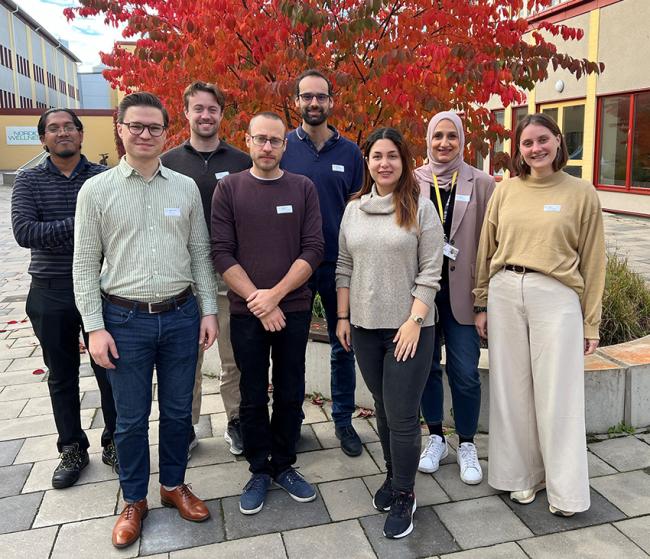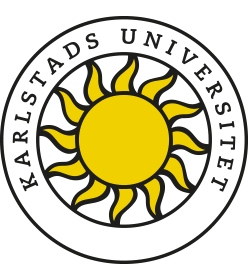Doctoral students and participating companies

Absolent: Eric Matteusson, "My research is about cleaning air from industrial processes. The research focuses on two parts: filtration of carbon dioxide and filtration of oil mist. The purpose of the research on carbon dioxide is to evaluate the feasibility of separating carbon dioxide on an efficient way to reduce the amount of carbon dioxide in conjunction with existing filtration of the air. The aim for the research on oil mist is to develop models to be able to design draining filters quicker and more efficient."
Blue ocean closures: Fredrik Andersson, "My research is focused on experimentally determining mechanical properties for the development and calibration of constitutive models of air-laid materials; these models will subsequently be utilized in a finite element analysis (FEA) environment, to simulate production processes involving complex multi-axial states of loading and deformation."
LIXEA: Carl-Magnus Brandén, "Lixea has an ionic liquid-based (Ionosolv) biorefinery, from which cellulose, lignin and hemicellulose derivatives are extracted. The behaviour of the cellulose from Lixea is unique and to this day not fully understood. Elias´s research at Karlstad University aims at gaining a fundamental understanding of the material, as well as furthering the possibilities for commercial viability of the material."
Nordic Paper: Björn Öman, "In my research I am looking at the production of grease-proof paper, what is known as sandwich paper. It is a paper that is incredibly well refined that it has an almost closed surface that fats and oils cannot penetrate. To achieve this, enormous amounts of energy are required in the refining process, and the more compact a paper is, the more energy is then needed during the dewatering process. My focus area is on the fibers, grinding and dewatering and my goal is to succeed in making this process more energy efficient to save on both resources and the environment."
Read published aticle BioResources: Improved vacuum dewatering of grease-proof paper utilizing a multi-slit vacuum suction box in laboratory scale :: BioResources (ncsu.edu)
Circulose: Elise Meurs, "With the textile industry being one of the most polluting industries, globally creating millions of tons of waste textiles per year, the urge for more textile recycling initiatives is growing rapidly. Circulose, being one of these recycling initiatives, produces a dissolving pulp from waste cotton which is then formed into newly spun viscose fibers, ready to be reused for various applications in the textile industry. However, with the industrial viscose-production process mainly being refined and optimized for the common industrial input materials such as special grade wood pulp and cotton linter pulp, the pulps from cotton waste material tend to perform differently in this well-known regeneration process. This PhD-project aims to increase the understanding of how and why the different pulps perform differently, focusing on the reactivity of recycled textile dissolving pulp during the viscose-process. This research strives to allow initiatives aiming to reduce cotton waste by reusing it as input for creating regenerated viscose fibers to be more commercially competitive."
Rottneros: Zaeem Aman, "Hornification is an irreversible process that occurs when cellulosic pulp is dried, leading to a decline in properties such as flexibility, reactivity, and re-swelling capacity. This industrial PhD project aims to investigate the mechanisms behind hornification through experimentation and to develop innovative drying strategies to mitigate its effects, thereby enhancing the recyclability of pulp fibers."
Associate without company: Morassa Raouf "This PhD project has a focus on novel processes and new applications of different types of nanocelluloses. Nanocelluloses are biobased materials and in our cases produced from ignocellulosic chemical pulp. The research should not require esoteric chemicals and should be possible to scale up. Permeability will be evaluated and divided into diffusivity and solubility. It will also modify the properties, e.g. by chemical cross-linking and hydrophobization, and use Hansen's solubility parameters to support the experimental findings. One hypothesis is that the poorer barrier properties of nanocelluloses at this relative humidity are due to the fact that the increase in water solubility is more important than the increased diffusion. A doctoral project in the field of chemical engineering should deal with possible applications. One obvious area is barrier coatings and films for paper and packaging. Another could be applications in coatings on battery separator membranes."
Thermia: Manal Rahal, "The primary aim of this project is to develop high-quality and robust machine learning system that operates energy-efficient functions in a heat pump."

